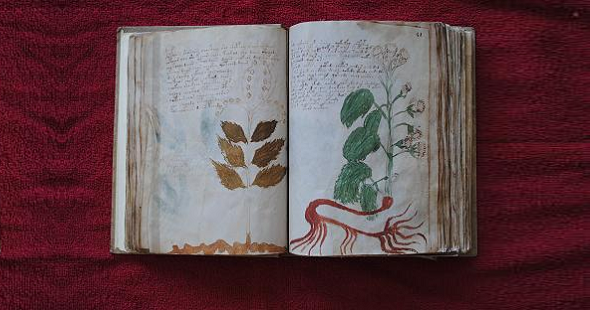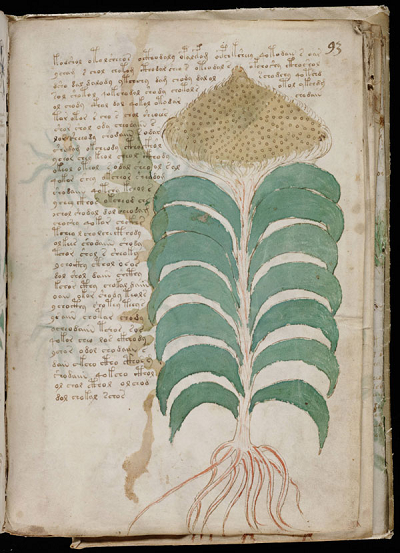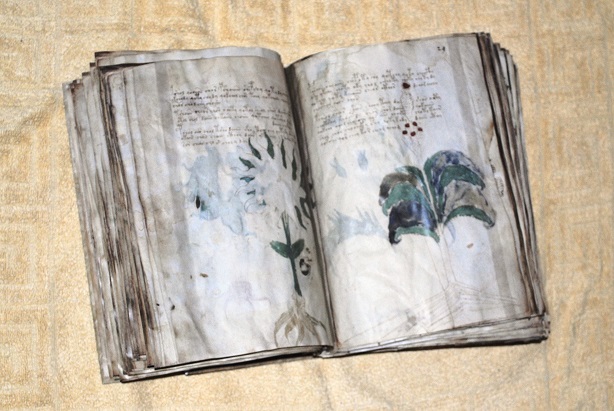Once again, the secret of the world’s most mysterious manuscript has been unlocked. This time the alleged solution comes from Russia. Does this one make more sense than the many others published before?
There are more than 50 persons who claim that they have found the solution of the Voynich manuscript – or at least that they have come pretty close to it. Some Voynich solvers believe that the manuscript was written in some old or lost language, others think that it was encrypted in a peculiar way. Still others even believe that the Voynich manuscript was written by extraterrestrials. However, all these proposed solutions have one thing in common: none of them has ever been accepted by the Voynich experts.
A new (alleged) solution from Moscow?
A few days ago a new alleged solution of the Voynich manuscript was published (thanks to Tobias Buckenmaier, George Lasry, Ralf Bülow, and Thorsten Voß for the hint). It goes without saying that I am always very skeptical about Voynich solutions. Is this one any better than the many others that have been published before?
A first look at one of the articles describing the new finding showed that this proposed solution is at least not one of the most ridiculous kind. There are no extraterrestrials involved, and the cleartext neither reveals the location of the philosopher’s stone nor the identity of Jack the Ripper. To be precise, the authors of this new publication don’t even claim to have deciphered the Voynich manuscript. They only say that they have come close to it.
Learning more about the alleged solution is not as easy as it seems. So far, I haven’t seen anything that resembles a research paper. The original source seems to be an announcement published by a Russian news agency in Russian. According to this announcement, the new hypothesis was developed by a team of scientists (mathematicians?) from the Keldysh Institute of Applied Mathematics (Russian Academy of Sciences). The team is lead by some Yuri Orlov, who is completely unknown in the Voynich scene. I hope, this is not a joke. Yuri Orlov is also the name of the main character in the movie Lord of War (played by Nicholas Cage).
Orlov and his team started their examination of the Voynich manuscript by conducting a statistical analysis of the text (certainly a good idea). They came to the conclusion that the unknown author of the manuscript used a simple encryption scheme: First, vowels and spaces are removed from the text; second, the resulting letter sequence is united in a new text, bestrewed with spaces beforehand. The cleartext consists of passages written in different languages – English, German, and possibly Italian, Spanish, or Latin. According to afore-mentioned Yuri Orlov, it is impossible to restore the entire cleartext because many words are ambiguous due to the missing vowels.
Does it make sense?
Orlov’s alleged Voynich solution is certainly one of the less spectacular ones. This makes it more credible than many others, but it doesn’t mean that it is correct.
So far, it is not possible to say more about this new hypothesis, simply because not much is known about it. The Russian news agency publication only gives a rough overview on how Orlov’s alleged solution works. I hope, Orlov and his team will publish a detailed paper about their findings in the near future.
One obvious question concerns the entropy of the text in the Voynich manuscript. If the vowels are omitted in a text, the entropy rises. Is the entropy of the content of the Voynich manuscript high enough to be consistent with a consonant-only text? I hope that the Russian researchers will give a plausible answer on this question.
If a reader knows more about the work of Orlov and his team from another source, I would be very interested to learn.
Follow @KlausSchmeh
Further reading: Does the Voynich manuscript show the solar eclipse of April 15, 1409?
Linkedin: https://www.linkedin.com/groups/13501820
Facebook: https://www.facebook.com/groups/763282653806483/





Kommentare (24)